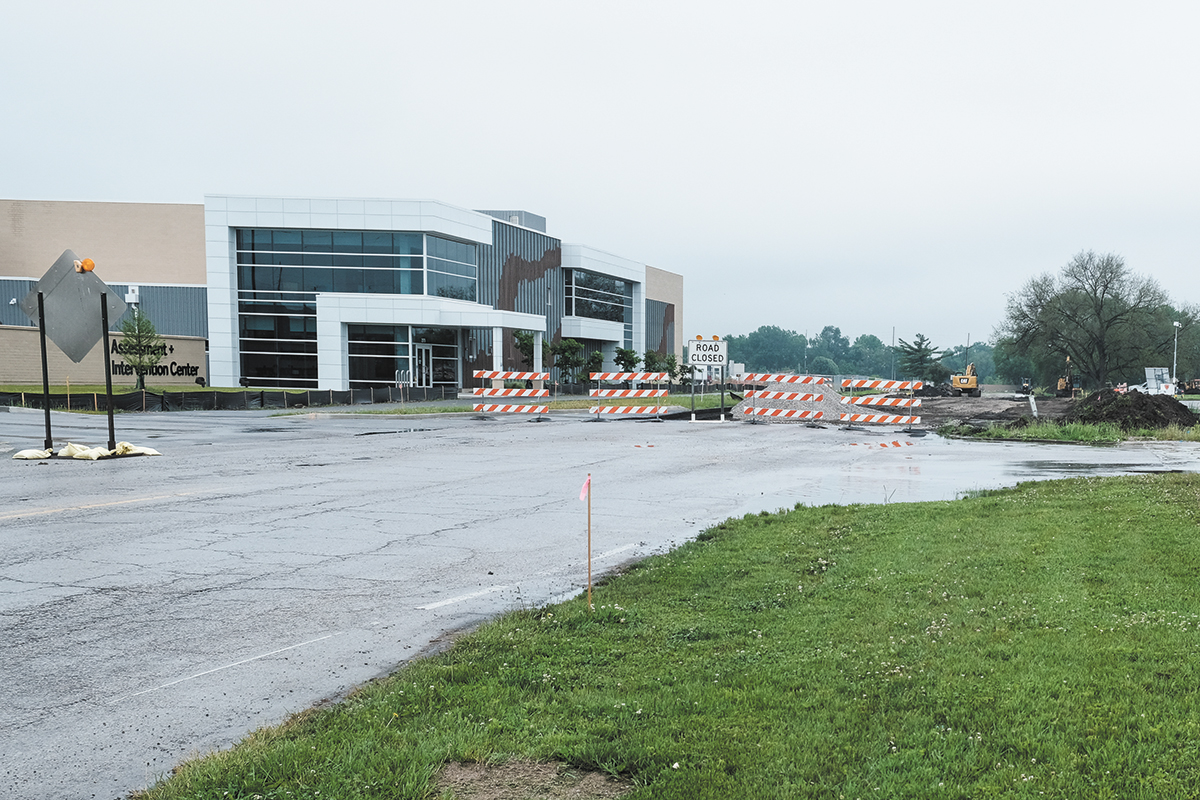Subscriber Benefit
As a subscriber you can listen to articles at work, in the car, or while you work out. Subscribe Now
Detailed plans that carefully choreograph the movement of each box and piece of furniture are being set into motion as the Marion County courts and jails begin the process of relocating from downtown Indianapolis to the new Community Justice Campus on the east side of the city.
The move-in dates are now just months away for the $567 million justice campus campus that broke ground in 2018. Chrysalis Global Consulting Services in Carmel has crafted an exhaustive moving plan that includes such precise instructions as to which door a particular chair or file cabinet will be carried through. The Circle City has set the deadline of Sept. 9 for companies to submit their bids for hauling the items from the old buildings to the new facilities.
“There’s a lot of work that remains to be done,” said Sarah Riordan, Indianapolis Mayor Joe Hogsett’s designee for the project’s management. “The folks who are doing the construction and installation of technology are doing a great job, but we’ve got to get it up to the finish line.”
The Marion County Sheriff’s Office is scheduled to reach the finish line Dec. 31 when the administrative offices have been moved and all the inmates have been lodged into the new 2,997-bed jail. For the courts, the finish line will come Jan. 10 when judges and staff will begin working in the new multistory court building.
In 2023, the Marion County Public Defender Agency and Marion County Probation Office are scheduled to move into a five-story office building that is currently under construction. Also, the juvenile courts and detention facility located at 25th Street and Keystone Avenue is proposing starting operations on the campus with the City-County Council’s approval of a new $40 million Youth and Family Services Center.
Judges and court personnel are already being encouraged to start shredding and throwing away papers and items that are not needed anymore. They have also been advised to take their personal things like photographs and mementos home for safekeeping during the move.

“We have people who’ve occupied these spaces for 20 years,” said Marion Superior Presiding Judge Amy Jones, who plans to remove her diplomas, pictures and lamps before the movers arrive. “It’s amazing what can accumulate in a small room.”
Preparing to leave
In October, the courts plans to send about 12 teams into the new court building to go room-by-room, making sure everything works, Jones said. They will be flipping the light switches, plugging devices into outlets and booting the computers to log on to the internet.
About the same time, the judges and court staff will undergo training to learn the new technology being installed in the courtrooms. Also, the courts are clearing their calendars of jury trials the first week at the CJC to give all employees time to get comfortable in their new surroundings without having to tend to jurors.
The sheriff’s office is solidifying its plans and gathering advice from other law enforcement agencies that have moved to new jails, according to Col. James Martin. Like the courts, the jail staff will undergo training in the new facility, including mock scenarios of transferring groups of inmates from the old building. Details as small as when the mattresses and blankets will be installed are being worked out.
Part of the sheriff’s planning includes taking steps to minimize the potential disruption that will come in early January when the courts will still be in the City-County Building and the inmates will be housed several miles away in the new jail. The sheriff’s staff will be relying even more on technology to enable offenders to appear in court remotely rather than physically transporting them back downtown.
Between an estimated 60 to 70 inmates are transported to court daily.
Martin said the move will result in a “better quality of life for the inmates and the employees. When people see what we’re moving into, they will be very impressed with what we’ve done.”
Not ready to leave
The Marion County Prosecutor’s Office is the one agency that may not be moving from its location on East Ohio Street, or at least having a satellite office on the new campus, according to reporting by the Indianapolis Business Journal. Prosecutor Ryan Mears said his office has not made a decision about relocating, but he has concerns about the higher rent increasing the cost of operations.
“This has been a financially-driven conversation in terms of what’s ultimately going to be the cost (of going there) and what are going to be the costs associated with moving,” Mears told the IBJ.
Without the prosecutor’s office, the second office building might be scrapped.
Jones said she does not foresee any problem if the prosecutor is not on the CJC campus. She remembered working as a deputy prosecutor and having an office in an outpost several blocks from the City-County Building. She and her colleagues relied on a 14-passenger van to ferry them to and from their hearings.
“That’s the nice thing is that they all have laptops and they can work from anywhere so it’s probably easier now,” Jones said of the prosecuting attorneys. “I don’t necessarily care where the attorneys are coming from as long as they know they’ve got a hearing and they need to be there.”
The Marion County Clerk’s Office will be sending only 24 employees to the justice campus while the remaining 86 will be staying in the City-County Building.
Both locations will offer some duplicate services, according to Russell Hollis, deputy director of the clerk’s office. These include accepting pro se filings and payment for child support, traffic court and other fees and fines. Also, the CJC office will accept appeals and process bonds from 8 a.m. to midnight seven days a week.
“The ability to perform much of the same functions at both locations gives the Clerk’s Office flexibility to rotate staff between the two locations if needed,” Hollis wrote in an email. “Additionally, we want to allow the public the opportunity to come downstairs from court and make a payment in the new justice campus.”
Looking ahead
The justice campus’s Assessment and Intervention Center, which is already providing addiction and mental health treatment, reflects a changed approach to criminal justice. That same change is showcased in the proposed Youth and Family Services Center where resources, programs and education will be provided to help troubled juveniles.
Jones explained the goal is to avoid incarcerating the young offenders then releasing them back to a dysfunctional homelife. Instead, young people and their families will be engaged in services that will put the youths on a positive path and, hopefully, divert them from involvement with the adult criminal justice system.
The center will offer differing levels of detainment, from overnight to long term. A respite center will be a place where police can take youth for a timeout from a bad situation and get assistance from a family facilitator to resolve whatever conflicts are percolating. Also, the facility will have 56 beds on the secured side, which is less than half of the 144 beds available at the Keystone location.
“It’s just the perfect opportunity,” Jones said of the new youth center. “These buildings are so old, and we’ve just basically been putting the round peg into the square hole just by trying to make things work. But now we can actually design something that can be effective and bring in new programming.”
Marion County Chief Public Defender Robert Hill said he also sees advantages to moving his agency to the CJC.
With three floors of the new professional office building, the agency will have plenty of room to bring under one roof the roughly 280 employees now stretched between offices downtown and the juvenile facility. Not only will the attorneys and staff be conveniently located to the new courts building and new jail, but they will also be working in offices that have upgraded technology.
“I think people are underestimating the wisdom of having a communal office because with people being together, there’s more opportunity for collaboration, brainstorming and collegial activities,” Hill said. “That’s one of the best features of our office, I think — we can get together and brainstorm.” •
Indiana Layer reporter Katie Stancombe and IBJ reporters Leslie Bonilla Muniz and Mickey Shuey contributed to this report.
Please enable JavaScript to view this content.
